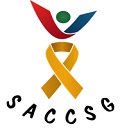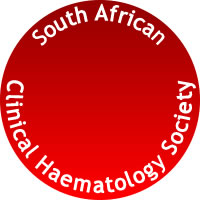Original Research
Patients’ characteristics, Cytochrome P4501A1 genetic polymorphisms and breast cancer risk in Sudanese women
Submitted: 08 August 2020 | Published: 27 October 2021
About the author(s)
Fatima Hamad, Department of Oncology, National Cancer Institute, University of Gezira, Wad-Madani, SudanSulma I. Mohammed, Comparative Pathobiology and Purdue University Center for Cancer Research, Purdue University, West Lafayette, United States of America
Abdelrahim O. Mohamed, Department of Biochemistry, Faculty of Medicine, University of Khartoum, Khartoum, Sudan
Dafalla O. Abuidris Elmustafa, Department of Oncology, National Cancer Institute, University of Gezira, Wad-Madani, Sudan
Abstract
Background: The CYP1A1 catalyses polycyclic aromatic hydrocarbons activation to reactive metabolites, causing deoxyribonucleic acid (DNA) damage and cancer. It is highly polymorphic and displays ethnic differences in various populations.
Aim: To evaluate the association of three polymorphic variants in the CYP1A1 gene with breast cancer in Sudanese women.
Sett ing: This is a case-control study.
Methods: After consenting, the participants completed questionnaires consisting of sociodemographic data, gynaecological status, and breast cancer history. We recorded clinical data, weight, and height for each woman and drew blood for PCR and RFLP analyses for CYP1A1 genotyping.
Results: The CYP1A1 M1 and CYP1A1 M3 genotypes and homozygous CYP1A1 M1 (C/C) and CYP1A1 M3 (C/C) genotypes are not associated with breast cancer risk and menopausal status in women. The homozygous CYP1A1 M2 (A/A) genotype had a significant association with a risk reduction of breast cancer in premenopausal women. In contrast, the heterozygous CYP1A1 M2 (A/G) and the homozygous (G/G) are associated with significant breast cancer risk.
Conclusion: Despite the limitations encountered in this study that included the small sample size and availability of age-matched controls, the results suggest that the CYP1A1 M2 polymorphism, educational level, and family history of breast cancer may have an association with the risk of developing breast cancer amongst Sudanese women and warrant confirmation in more extensive studies.
Keywords
Metrics
Total abstract views: 1870Total article views: 2181



